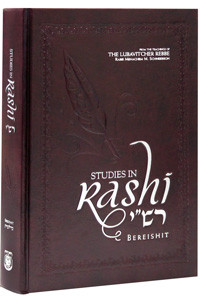Kosher Bookworm: The Rashi Commentary and Chabad
It was not until the passing of the Lubavitcher Rebbe, Rabbi Menachem M. Schneerson, of blessed memory, that the importance of Rashi’s commentary in Chabad theology became apparent to the outside world.
To the Rebbe, Rashi’s teachings were to represent the foundation for most of his future teachings on Chumash. As the years progressed, his sichos in Yiddish began to increasingly contain Rashi’s commentary, a fact that was to follow all his teachings for the rest of his life.
This influence was further reflected over the years in the numerous other Chabad books, in both Hebrew and Yiddish that were devoted solely to these Rashi oriented teachings by the Rebbe.
Recently, the publication of this vast scholarship has been slowly translated into English resulting with a small portion of it finally being published by the movement. “Studies in Rashi: Bereishis” [Kehot Publication Society, 2011] translated by Rabbi Y. Eliezer Danzinger represents the first step in popularizing these studies to an English speaking public.
In the book’s introduction we are informed of the history behind this effort. “In late 1964, after the passing of his mother, Rebbetzin Chana Schneerson, the Lubavitcher Rebbe, Rabbi Menachem M. Schneerson , of righteous memory, began to dedicate one segment of his weekly Shabbat farbrengens to the study of Rashi’s classic biblical commentary. What soon emerged was an innovative method for both the study and analysis of Rashi, and for the study of Torah as well”.
These talks were to continue with increasing complexity and sophistication for the next twenty five years. This was represented in the utilization of enhanced linguistic precision, often utilizing intense microscopic questioning on Rashi’s commentary, that uncovered the path to many layers of depth of meaning that were heretofore buried between the lines and deep within the text .
This English work begins with the details of the seventeen rules that have come to represent Rashi’s general principles. Among these principles are the roles that basic meaning, simplicity, avoidance of verbosity, and the use of Midrash play in Rashi’s work.
This work consists of twelve essays, seven of which were originally printed in Likkutei Sichot in Hebrew. All these sichot, one for each parsha in Bereishis, are printed with the original or translation of the Hebrew version alongside the English translation with complete English footnotes at the bottom of the text. Also, at the book’s end is a forty page section of complete detailed notes, in Hebrew, an invaluable learning resource tool to enable the learner to gather more research so as to better understand the basic text and Rashi’s commentary.
In addition to the Rashi commentary, the Rebbe’s teachings often relate the text and commentaries to events that impacted upon Chabad history. This aspect can be demonstrated in this coming week’s Parsha, Vayishlach, wherein it is noted that, “Parshat Vayishlach is always read in proximity to the 19th of Kislev, the day on which the Alter Rebbe, author of the Tanya was delivered from imprisonment”.[Pages 216 – 220]
Within these pages are detailed the relationship, as seen from the view of the Rebbe, of the relevant commentaries to the historical events that were to play a crucial role for Chabad chassidut.
This work is not meant for casual reading. It’s content is very complex and detailed requiring much time and study. While Rashi’s method can be viewed as simple and direct, the Rebbe’s application of his own “derech halimud” adds a dimension that goes way beyond Rash’s original methodology.

 66.0°,
Shallow Fog
66.0°,
Shallow Fog 




